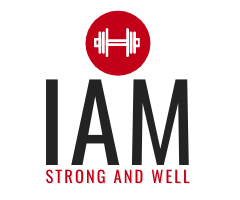Poison ivy rash is an allergic reaction caused by the plant’s oil resin. This oily resin is present in the poison ivy’s stem, leaves and roots. Other plants like poison sumac and poison oak can also cause this kind of reaction. Another name for this oil resin is called urushiol. You can get these when going and doing outdoor activities like hunting, gardening, farming, camping, fishing from the shoreline, hiking, landscaping, forestry, firefighting, and the like.
When an allergic reaction occurs, wash the affected area of the skin right away to remove the oil. This rash can be very itchy and become swollen that can last for days up to several weeks. For mild cases of poison ivy rash, applying soothing lotion and taking cool baths will help with lessening the rash, itch and swelling. If the rash is on the face or the genital areas of the body, immediate consultation is required to get prescription medication for widely spread and severe rash.
What are the Symptoms of a Poison Ivy Allergy?
Some of the symptoms may include the occurrence of:
- Itching
- Redness
- Swelling
- Blisters
- Having difficulty in breathing, especially if you have inhaled smoke from a burning poison ivy
The poison ivy rash often appears in a straight line due to the way the plant brushes against the skin. The rash may also be spread out even more if the oil resin touches a piece of cloth and then be in contact with some areas of your skin. The allergic reaction usually develops 12 to 48 hours after being in contact with the urushiol and may last for two to three weeks.
Preventive Measures You Can Do to Avoid Poison Ivy Allergy
- Avoid the Plant.
To do this, you have to learn how to identify the poison ivy, poison sumac, and poison oak all season. When engaging in activities that may expose you to the plant-like hiking, camping, and jogging, try to stay on clear pathways. When doing outdoor activities, wearing socks, pants, and long sleeves is advised. When camping, pitch your tent in the areas that are free from plants and trees that may cause you these reactions.
- Wear protective gears.
When doing outdoor activities like camping and hiking, wearing pants, socks, boots, long sleeves, and heavy gloves.
- Wash your skin with or your pet’s fur.
After being in contact with a poison ivy plant, poison sumac, or poison oak, wash the affected areas with water and soap within 30 minutes to one hour. This can reduce the severity of the rash and its swelling.
For your pet, oil resin can attach to their furs especially when they are roaming around outdoor areas that may have poison ivy plants and the like.
- Kill or Remove the Plant.
To remove or kill the plant, you have to be able to identify and be familiar with the poison ivy plant from your garden. Applying an herbicide or pulling them out of the ground from their roots while wearing heavy gloves to prevent the oil from touching your skin. Avoid burning the poison ivy plant and other plants that may have the same allergic reaction for the smoke from these plants may also cause allergies and rash.
- Clean contaminated things.
If you are using heavy gloves while removing the poison icy plant, make sure to clean it with warm and soapy water to remove the oil from the object. Be careful as well from removing the gloves from your hands. Wash the clothes that you wear with warm water as well and separate it from your other clothes when doing the laundry. Other objects that you used that may be in contact with the plant, especially with your gardening tools, make use to wash them thoroughly as well.
- Apply A barrier cream.
You can try some over-the-counter creams or lotions that are intended to act as a barrier between your skin and the oil resin or from the urushiol that causes the allergy rash.
Possible Home Treatments for Poison Ivy Allergy
- Apply over-the-counter cortisone cream for the first few days.
- Apply calamine lotion or creams that contain menthol to relieve the itch.
- Take oral antihistamines like diphenhydramine such as Benadryl, which can also cause and help in sleeping better.
- Soaking the affected skin with a cool water bath with baking soda or oatmeal-based bath products.
- Put cool and wet compresses on affected areas for 15 to 30 minutes several times a day.
For severe rash allergies, consult your doctor to give you the right prescription drugs. You can go to a walk-in clinic Edmonton for a consultation. You can also find online doctors that are specialized in skin conditions and allergies. Poison ivy allergy can be treatable with online consultation.
Poison Ivy allergy can be treated if checked by a medical professional right away. If you or your loved one experience this kind of allergy, always keep in mind to try these home treatments and to call your family doctor or online doctor in Canada for immediate help. There are research up until now that modern medicine is still effective to humans.

